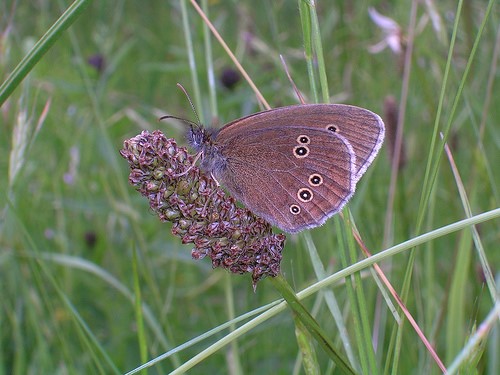
Habitat loss and changes in habitat management have been the greatest drivers of change in UK butterfly populations. Numerous studies on butterfly ecology have helped conservationists to restore suitable habitat, and subsequent monitoring through the UKBMS has enabled us to determine how successful this has been. In recent years some of our most threatened species, including the Pearl-bordered Fritillary and Heath Fritillary have started to show recovery across sites where habitat conservation has been put in place. The Large Blue has been successfully re-introduced into England and has now spread naturally into other suitable areas, whilst populations on monitored sites have significantly increased. However, many species are still strongly affected by management of habitats; biodiversity indicators using UKBMS data show that both woodland and farmland butterflies are declining.
Colonisation of newly restored habitats has been shown to take several years, and is related to a species’ mobility and diet, with less mobile species and those with localised host plants taking longest. Models have shown the potential importance of –landscape- versus site-scale conservation. Habitat heterogeneity has been show to be important for enhancing and stabilising butterfly populations. The habitat connecting butterfly populations affects species’ ability to disperse to new sites and their ability to recovery after population crashes (e.g. caused by extreme events such as drought).
Many species have shown significant declines despite the predicted positive effects of climate warming. Those that have increased have generally done so because conservation management has been put in place, for example the Adonis Blue and Silver-spotted Skipper where grazing is essential. Research has also shown that contrary to the expectation that more habitats will be used by butterflies as they move northwards with climate warming, many species’ habitat associations have reduced over time. The likely cause of this is the deleterious effects of habitat degradation.
In addition to direct habitat loss there are other factors which may be contributing to butterfly declines. Future and ongoing research into the effects of pesticides, for example, is a new area of research for which monitoring data is likely to help determine to what extent butterflies are affected by farmland chemicals.
Landscape structure affects the recovery of butterfly populations after extreme events. The Ringlet butterfly shows population crashes after severe droughts. These crashes are reduced, and the recovery thereafter increased, in larger and more connected patches of woodland habitat. Oliver et al. (2012) in Ecography (doi: 10. 1111/j.1600-0587.2012.07665.x)
In warmer years butterflies use a greater range of habitats, yet habitat breadth has decreased over time for most species. Habitat degradation continues to be a major driver of reductions in habitat breadth and population density of butterflies. Oliver et al. (2012) in Global Change Biology (doi:10.1111/j.1365-2486.2012.02737.x)
Host plant and mobility affect speed of colonisation by butterflies on restored grasslands. There is a time lag between arable reversion and colonisation which should be accounted for when assessing restored grassland habitats. Low mobility species and those with localised host-plants take the longest to colonise. Woodcock et al. (2012) in Biological Conservation (doi: 10.1016/j.biocon.2012.05.013)
Butterfly dispersal is related to habitat quality between sites. Populations separated by more suitable habitat tend to show increased similarity in the yearly fluctuations in butterfly population counts. Powney et al. (2011) in Methods in Ecology and Evolution (doi: 10.1111/j.2041-210X.2011.00098.x) + video? (http://www.youtube.com/watch?v=aXP14wM1hLc)
Butterfly populations benefit from having a mixture of habitats available. Populations of butterflies are more stable, and thus more likely to persist, in heterogeneous landscapes: Oliver et al. (2010) in Ecology Letters (doi: 10.1111/j.1461-0248.2010.01441.x)




